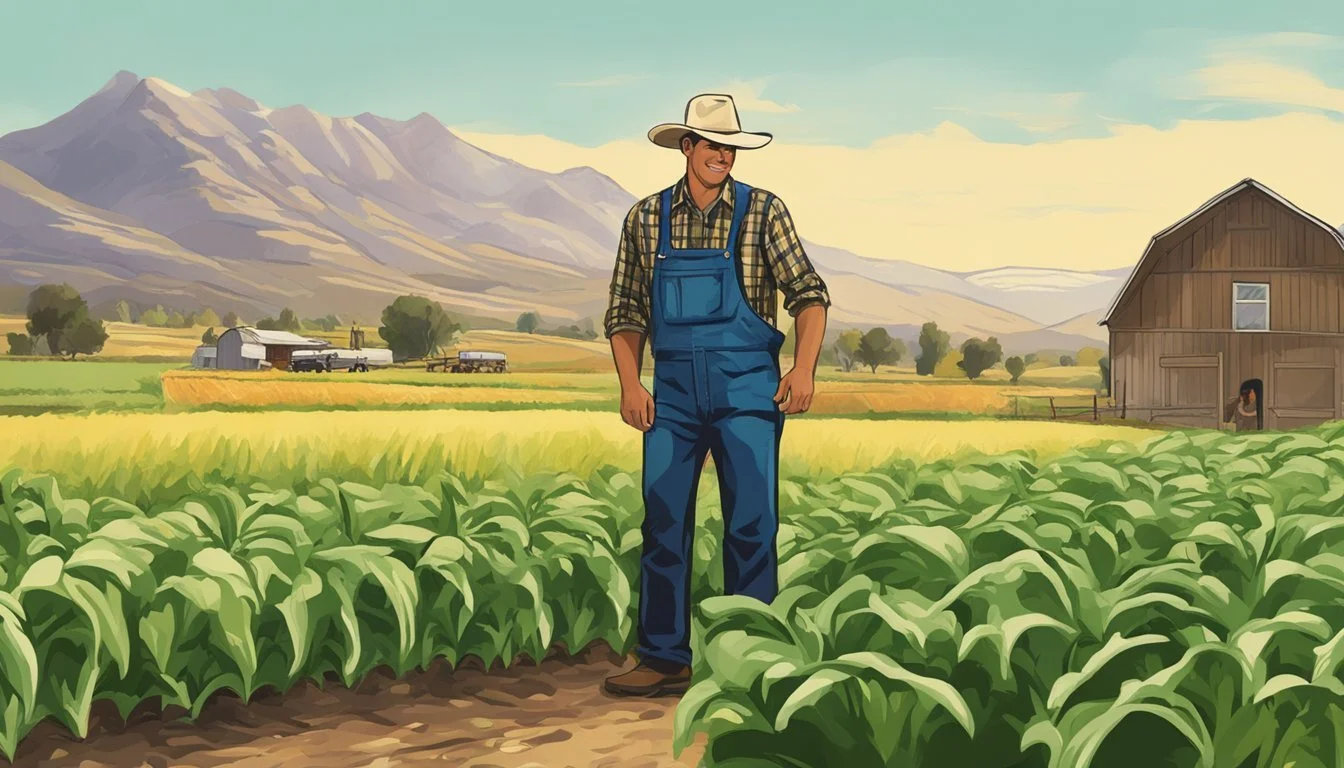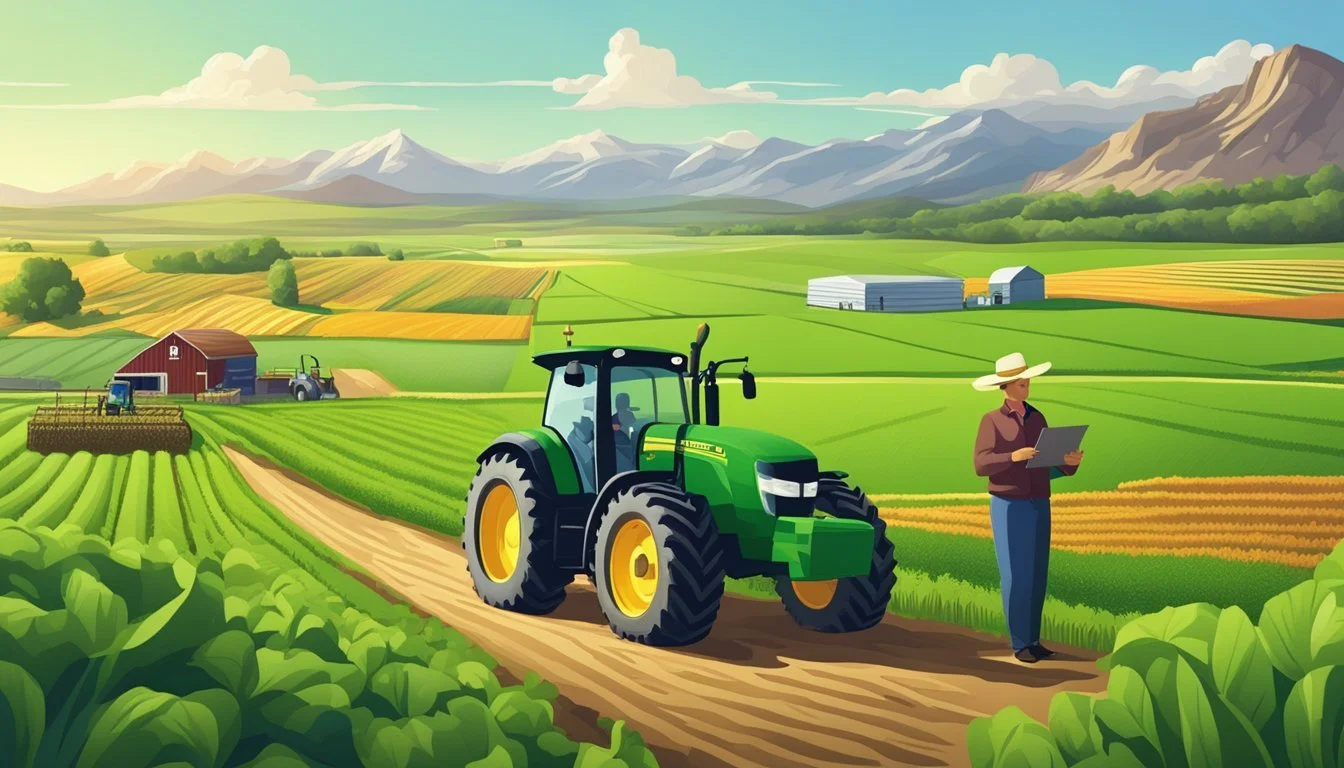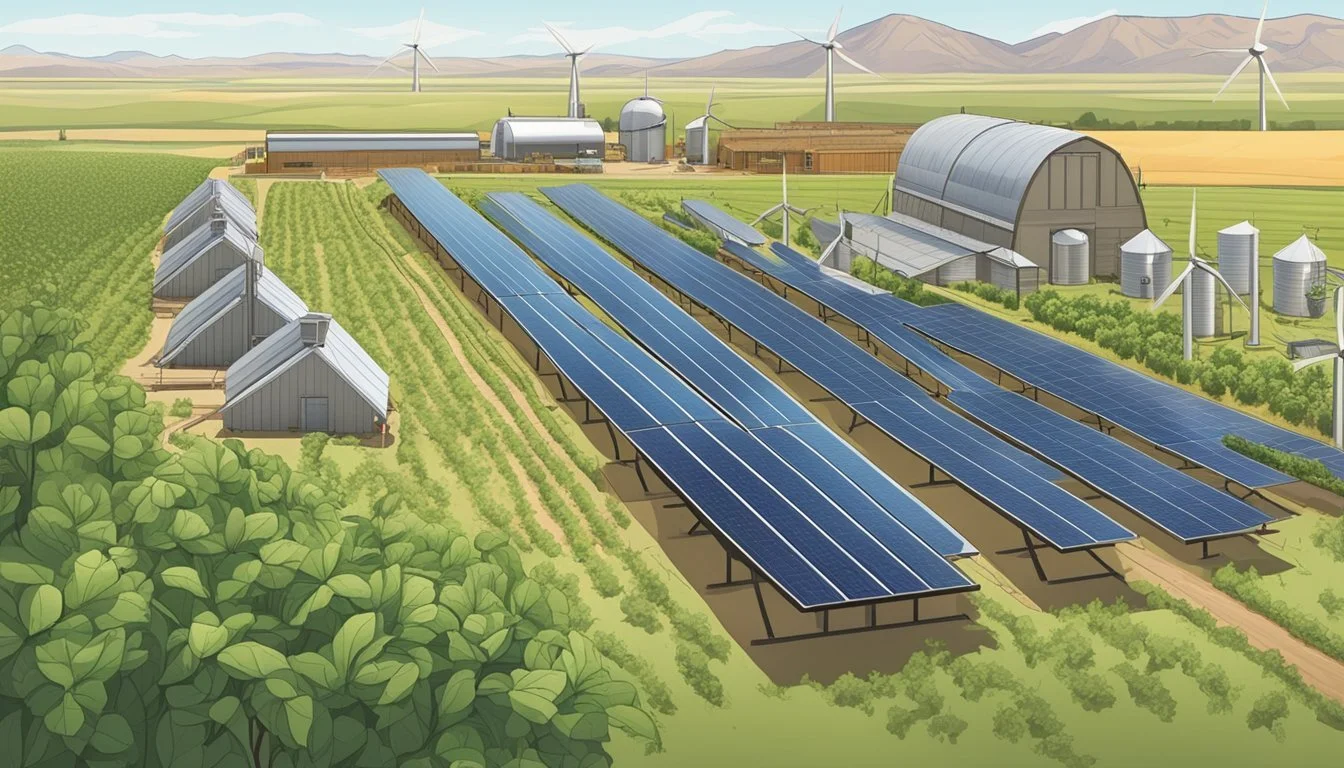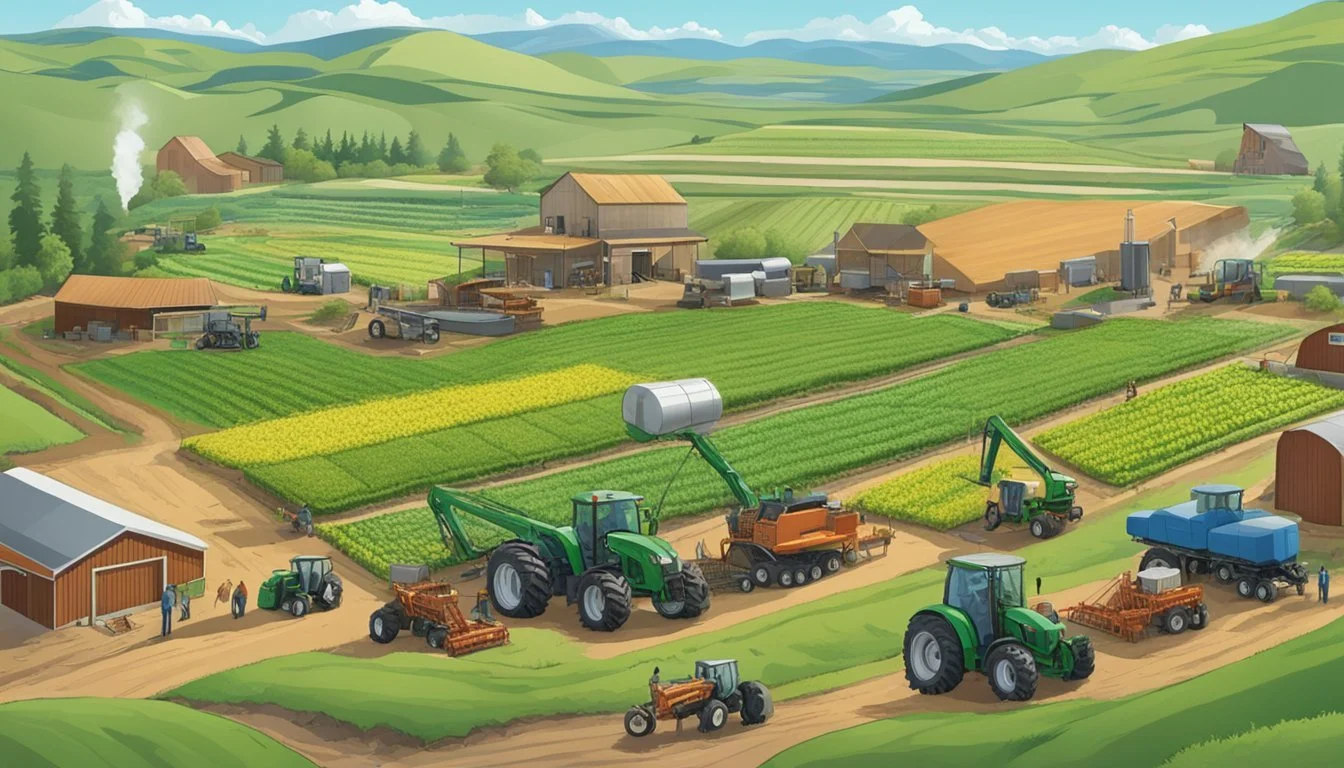Farming Grants Utah
Navigating Financial Aid for Agriculturists
Farming in Utah is an industry that significantly contributes to the state’s economy and the well-being of its residents. Grants play a critical role in supporting farmers and the agricultural sector, addressing various needs from water optimization to infrastructure improvement. The Utah Department of Agriculture and Food (UDAF) administers multiple grants aimed at fostering the development of the state's agricultural and food industries. These grant programs are designed to offer financial aid that can help farmers implement more efficient irrigation techniques, enhance crop yields, and improve soil health.
Access to these grants can be a game-changer for local farmers who face the ever-present challenges of changing climate conditions and market demands. Programs such as the Agricultural Water Optimization Grant seek to encourage the adoption of advanced water management practices that can lead to more sustainable farming methods. Moreover, funds from the USDA AMS Resilient Food Systems Infrastructure program assist in building resilience in the food supply chain, offering new markets for small farms and supporting the creation of value-added products.
Utah's farms are integral to ensuring a reliable food supply and creating a resilient agricultural framework within the state. Agricultural loans and additional incentives, including emergency disaster relief and rural rehabilitation loans, further support farmers in maintaining and expanding their operations. By navigating the available agricultural loan programs, Utah farmers can invest in their farms with the confidence that the state acknowledges and actively supports their invaluable contribution to society.
Overview of Farming in Utah
Utah's wide-ranging landscapes and climates support a diverse agricultural sector, making it integral to the state's economic stability and food system. With a focus on key crops and livestock, agriculture in Utah not only provides substantial profits for farmers and ranchers but also underpins the market stability of the region.
Significance of Agriculture
Agriculture plays a pivotal role in Utah’s economy; it is a primary employer and a fundamental part of the state's infrastructure. Rambling acres of land are devoted to farming and ranching activities. The Farm Service Agency (FSA) alongside the United States Department of Agriculture (USDA) offer multiple programs that aid in sustaining the strength of the agricultural sector. They provide financial support and guidance to Utah’s ranchers and farmers, ensuring the resilience and growth of the state's agricultural output.
Key Crops and Livestock
Utah's arable land is utilized extensively for both crop cultivation and livestock breeding. Key crops grown in the state include:
Hay: Essential for supporting the livestock industry.
Wheat: Adapted to the state's varied climates.
Corn: Both for feed and the burgeoning specialty crop industry.
Utah's livestock sector is buoyed by:
Cattle: Ranches contribute significantly to the economy through beef production.
Pigs: A smaller yet valuable market segment.
Poultry: The production of eggs and chicken also adds to the state’s agricultural portfolio.
Utah’s ranchers and farmers remain at the forefront of the U.S. food system, balancing traditional practices with innovative techniques to meet the demands of the market.
Farming Grants and Financial Assistance
In Utah, various grants and financial assistance programs are available to support agricultural operations. They are designed to foster growth and sustainability in the farming sector, particularly addressing water optimization, disaster relief, and enhancement of middle-of-the-supply-chain activities.
Types of Available Grants
The Utah Department of Agriculture and Food (UDAF) administers multiple grants tailored to advance the state's agricultural and food industries. Noteworthy programs include:
Agricultural Water Optimization Grant: Aimed at efficient water usage, with an application period from December 1, 2023, to January 31, 2024.
Specialty Crop Block Grant Program: This program focuses on specialty crops, enhancing their competitiveness.
UDAF also issues one-time grants for immediate economic relief, supported by federal funds under the CARES Act, which do not require repayment.
Navigating the Application Process
When applying for grants, the process can generally seem complex. Applicants should:
Identify the appropriate grant: Align their needs with the objectives of the grant program.
Prepare the necessary documentation: Accurate and comprehensive documentation is crucial.
Adhere to deadlines: Applications are only accepted within the designated window.
The UDAF website provides specifics on open grants and previous programs, offering guidance to potential applicants.
Role of USDA and UDAF
The U.S. Department of Agriculture (USDA) plays a pivotal role alongside the UDAF, offering financial assistance through various programs. They oversee conservation efforts and help mitigate financial risks via insurance cost-share programs. Additionally, the USDA through agencies like the Farm Service Agency offers loans and has loan specialists to assist beginning farmers.
UDAF's contribution is not limited to grants. It also encompasses loan programs to aid in disaster relief, rural rehabilitation, and more. These programs aim to ensure long-term profitability and resilience within Utah's agricultural community.
Resource Management and Conservation
Utah's agricultural sector benefits significantly from various programs aimed at promoting resource management and conservation. These initiatives help sustain agricultural lands, enhance water quality, and protect wildlife habitats.
Land Conservation Strategies
The Utah Department of Agriculture and Food (UDAF) operates a Land Conservation Program that focuses on voluntary, incentive-based methods to preserve productive farmland. This effort is crucial for safeguarding Utah's agricultural future and maintaining the vitality of the state's broader working landscape.
Conservation Practices:
Voluntary participation in land easements
Incentives for preserving productive agricultural land
Water Quality and Irrigation Systems
The UDAF Agricultural Water Optimization Program allocates grants for projects that improve operational efficiency and water quality. This includes initiatives to significantly reduce consumptive water use and revamp irrigation systems, thereby achieving better agricultural production and profitability.
Improvements in Irrigation Systems:
Enhanced system designs reducing water wastage
Optimized water application methods for better crop yields
Wildlife and Habitat Protection
Utah’s approach to conservation entails a comprehensive strategy that includes not only land and water but also wildlife and habitat protection. The Natural Resources Conservation Service (NRCS) and state-led programs take a watershed-wide approach to address resource issues.
Wildlife and Habitat Conservation Efforts:
Development of conservation projects within watersheds
Funding for initiatives supporting wildlife habitat sustainability
Agricultural Business Development
Agricultural entrepreneurs in Utah are supported through various programs designed to enhance marketing strategies, access new markets, and solidify business planning and vision. These initiatives aim to create sustainable profits and growth for the state's agribusinesses.
Marketing and Sales Growth
Businesses in the agricultural sector can benefit from state-administered grants aimed at improving marketing efforts. Particular attention is given to strategies that increase product visibility and sales. For instance, Agricultural Water Optimization Grant initiatives can help businesses market the benefits of their water-efficient practices to consumers who value sustainability.
Expanding to New Markets
Expansion into new markets is another key area of focus. The Rural Business Development Grants are designed to assist small and emerging businesses in rural areas, potentially supporting their entry into broader markets. This expansion can connect Utah's producers with cooperative efforts, like farmers market promotion programs, to reach a larger customer base.
Business Planning and Vision
To lay a strong foundation for long-term success, Utah's agriculture-related enterprises also have access to resources that help in crafting a clear business vision and thorough business plans. These resources often encompass educational material as well as the opportunity for partnerships that provide expertise and insights. By having a strong vision and plan in place, businesses can set and achieve profit goals with greater efficiency and effectiveness.
Educational Resources and Support
Educational resources and support for Utah farmers are essential services provided by various entities to foster growth and innovation in agriculture. These offerings focus on equipping farmers with the knowledge and tools necessary to adapt and thrive in the dynamic agricultural sector.
Training Programs for Farmers
The Utah Department of Agriculture and Food (UDAF) prioritizes skills development by offering training initiatives tailored to farmer's needs. These programs often provide hands-on experience and technical assistance to ensure that farmers are well-versed in the latest agricultural practices and technologies.
Research and Development
Research and development are critical to advancing Utah's agricultural industry. Funding and support for research are available through grants that aim to optimize agricultural water usage and improve supply chain activities. This commitment to innovation encourages sustainable farming strategies and methodologies.
Schools and Community Outreach
Local schools and community programs in Utah are instrumental in educational outreach. They play a pivotal role in informing and educating future generations about the importance and practices of agriculture. This outreach often includes mentoring programs and collaborations with farmers to provide real-world insights into the agricultural sector.
Agricultural Equipment and Supplies
In Utah's agricultural sector, acquiring the right equipment and supplies is critical for productivity and growth. Grants are provided to support farmers in purchasing and maintaining equipment, implementing safety training, and embracing technological advancements to foster efficient and sustainable farming practices.
Purchasing and Maintenance
Farmers require various types of equipment such as tractors, plows, and irrigation systems to effectively cultivate crops and manage their farms. They also need supplies that range from seed to fertilizers to promote healthy food production. When it comes to maintenance, the equipment’s longevity and performance are directly linked to regular check-ups and repair work to prevent breakdowns during critical farming phases.
Equipment: Tractors, Plows, Irrigation Systems
Supplies: Seed, Fertilizers
Maintenance: Regular Check-Ups, Repairs
Safe Operation and Training
Safety is paramount in the handling of agricultural equipment. Farmers must be properly trained in the safe operation of machinery to prevent accidents and ensure the welfare of the workforce. They should also be aware of how to protect pollinators and other beneficial organisms while operating equipment, as these are vital to the ecosystem and help in producing healthy crops.
Safety: Machine Operation, Preventing Accidents
Training: Operator Courses, Safety Protocols
Pollinators: Protection Strategies, Eco-Friendly Practices
Efficiency and Technological Advancements
The adoption of advanced technologies plays a significant role in improving the efficiency of farming operations. Smart farming techniques and precision agriculture can lead to better yield and resource management. Grants may be available for acquiring technology that aids in optimizing water usage and improving soil health, ultimately leading to increased efficiency and profitability.
Technologies: Smart Farming, Precision Agriculture
Efficiency: Yield Improvement, Resource Management
Soil Health: Water Optimization Equipment, Soil Health Monitoring Systems
Sustainable Farming Practices
Sustainable farming practices in Utah focus on the preservation of natural resources and the promotion of soil health, recognizing the essential role these practices play in long-term agricultural success and environmental conservation.
Organic and Specialty Crop Production
Organic farming emphasizes the use of natural processes and materials to enhance ecological balance. Utah promotes organic and specialty crop production through initiatives like the Specialty Crop Block Grant, which supports projects designed to boost the competitiveness of fruits, vegetables, tree nuts, dried fruits, and nursery crops.
Key Practices for Organic Production:
Avoidance of synthetic fertilizers and pesticides
Use of organic seed and planting stock
Implementation of organic compliant soil amendments
Benefits to the Ecosystem:
Enhanced biodiversity
Improved pollination effectiveness
Soil Health and Crop Rotation
Healthy soil is a cornerstone of sustainable agriculture, with crop rotation playing a vital role in maintaining soil structure and nutrient levels. Crop rotation also aids in pest management and reduces the need for chemical inputs.
Soil Health Strategies:
Regular testing for soil nutrient levels
Adding organic matter to improve soil structure
Crop Rotation Benefits:
Breaks pest and disease cycles
Balances soil nutrient depletion and replenishment
Conservation Planning
Conservation planning involves strategies for managing agricultural land to prevent resource depletion. A focus on conservation ensures that farms remain productive while also safeguarding health and natural resources for future generations.
Conservation Measures:
Erosion control to protect topsoil
Efficient water use to preserve natural resources
Sustainability Outcomes:
Long-term viability of farming operations
Protection of water quality and agricultural lands through responsible stewardship
Disaster Preparedness and Response
Disaster preparedness and response approaches are critical to support Utah’s agriculture facing natural disasters. Focused efforts are tailored toward mitigating risks, delivering timely recovery solutions, and securing financial protections.
Mitigating Risks from Natural Disasters
Collaborative measures among local conservation districts and national entities like the Natural Resources Conservation Service are essential to preemptively reduce the impact of natural disasters on agricultural operations in Utah. They emphasize the implementation of preventive strategies to safeguard crops and livestock.
Resource Management: Effective conservation plans manage water use and soil health.
Infrastructure Resilience: Building robust farm facilities and irrigation systems to withstand extreme weather.
Recovery and Reseeding Efforts
Recovery and reseeding efforts gain momentum following disaster events. The Utah Department of Agriculture and Food (UDAF) facilitates resources for:
Crop Reimbursement: Farmers can seek reimbursement for a 50% loss in crops compared to average production over the prior three years due to drought disasters.
Reseeding Programs: Initiatives to restore agricultural land with resilient crop varieties and techniques.
Financial Protections and Insurance
Secure financial frameworks are critical for farmers and ranchers to withstand the economic shocks of natural disasters. UDAF provides:
Emergency Disaster Relief Loans: Assistance for farmers affected by extreme drought conditions.
Grants and Insurance: Through competitive subaward grants, funding is provided for supply chain activities. Pre-filled applications for insured producers with losses due to natural disasters are issued by the USDA.
Community and Industry Partnerships
Partnerships within the agriculture community in Utah enhance the synergistic effects that result from cooperative ventures, leading to advances in conservation, education, and local food system engagement.
Collaboration with Conservation Districts
In Utah, conservation districts work closely with farmers to implement practices that optimize water usage and protect natural resources. They facilitate the Agricultural Water Optimization Grant, which had an application window from December 1, 2023, to January 31, 2024. These districts emphasize the importance of using water efficiently, a precious commodity in Utah's arid climate.
Roles of Nonprofits and Cooperative Extensions
Nonprofit organizations play a pivotal role in community development and agricultural education. The Rural Community Development Initiative (RCDI) Grants are designed to support nonprofits aiding in housing, community facilities, and economic projects. The cooperative extensions, in partnership with universities, provide essential educational resources and training, which can improve food safety, pest control, and plant health.
Engagement in Local Food Systems
The engagement in local food systems is critical for the development of resilient food economies in Utah. The Utah Department of Agriculture and Food's competitive subaward grants aim to support food and farm activities centered around local food systems. These grants empower municipalities and local producers to diversify and strengthen the agricultural market through support for marketing efforts, research, and certifications.
Grant Success Stories
Utah's agricultural sector has seen a significant boost through grants provided by various programs. These success stories reflect targeted investments that support innovation, research, and outreach, ensuring equitable opportunities for farms and related operations across the state.
Case Studies from Utah Farms
Under the umbrella of the Utah Department of Agriculture and Food (UDAF), numerous farms have received funding to enhance their operations. A particularly notable case includes a family-owned apple farm in Utah County that utilized a $250,000 grant. This grant allowed them to improve their operations and widen the marketability of their products, demonstrating the UDAF's commitment to fostering growth and sustainability in small agricultural ventures.
Another success involves the Utah Grazing Improvement Program Grant, which has provided substantial support to local grazing operations. Through these funds, farmers have been able to implement sustainable practices, optimizing their land's usage and improving profitability.
Innovative Projects and Outcomes
The USDA has facilitated various innovative projects through its grants. In southeastern Utah, USDA Rural Development grants led to significant advancements in economic development. They provided technical assistance and training to bolster local economies.
Project Type Description Outcome Water Optimization Grants up to $500,000 for projects aimed at reducing water use while maintaining or improving agricultural productivity Enhanced efficiency and operational flexibility for agricultural water users Crop Growth with Less Water Range from $1,000 to $500,000 for diverse agricultural entities About half the initiatives benefitted the Great Salt Lake watershed, reflecting a clear impact on water conservation in agriculture
These examples illustrate the tangible benefits of grant programs: they are not only pathways to enhance individual operations but also serve a wider ecological and economic purpose within the state of Utah.










